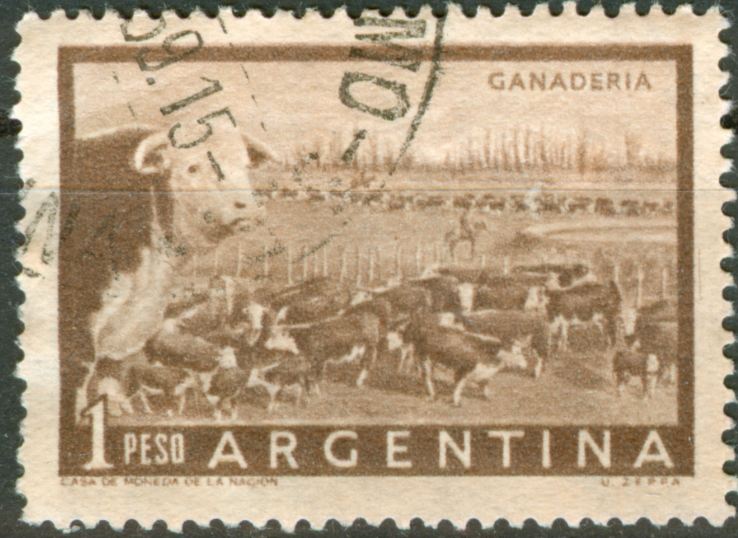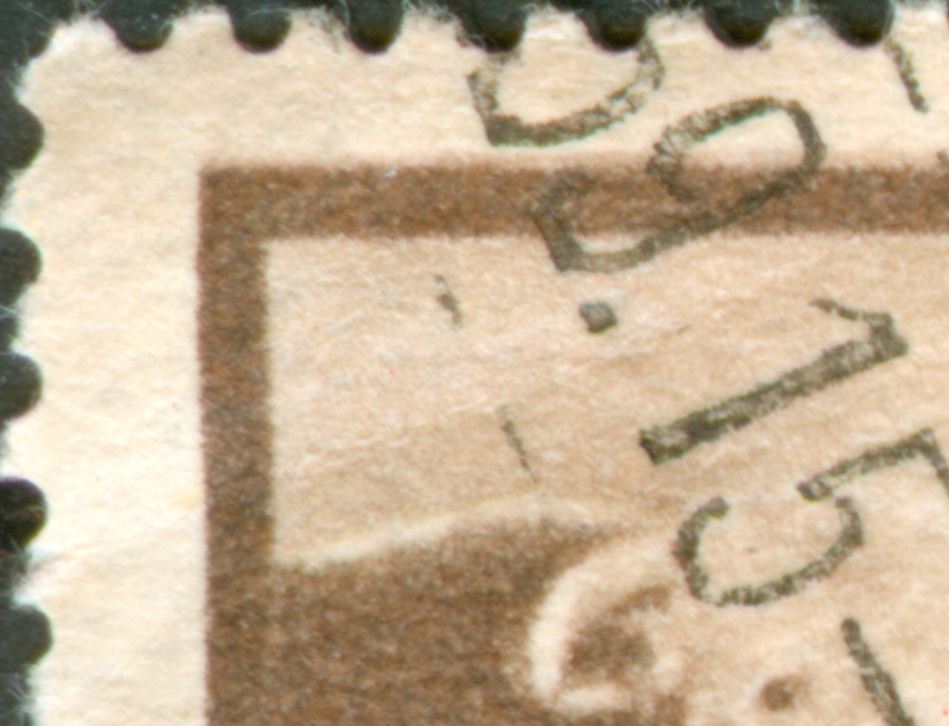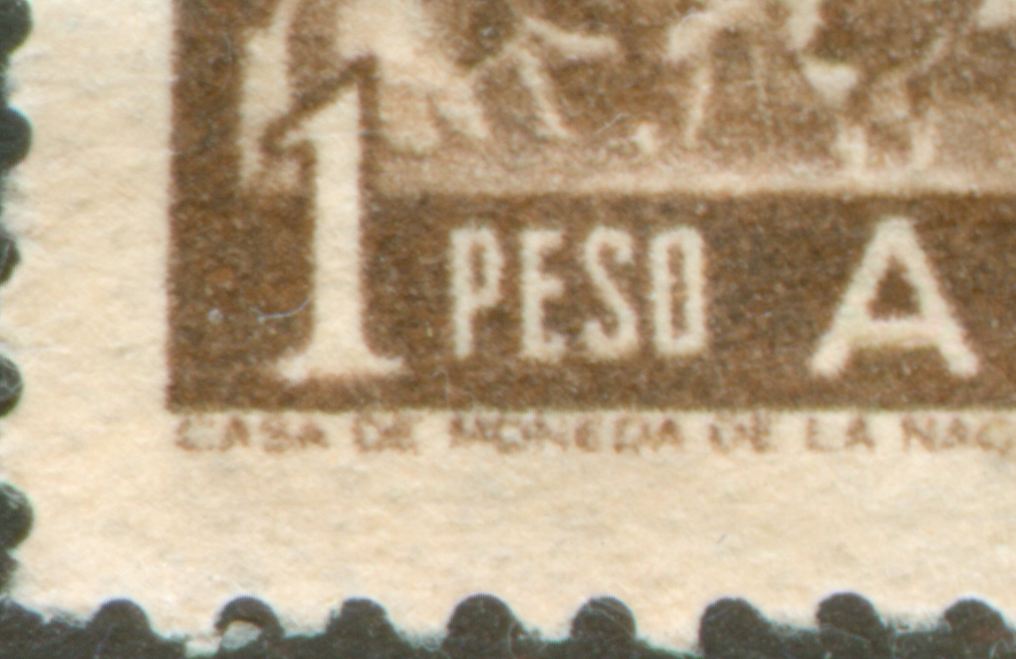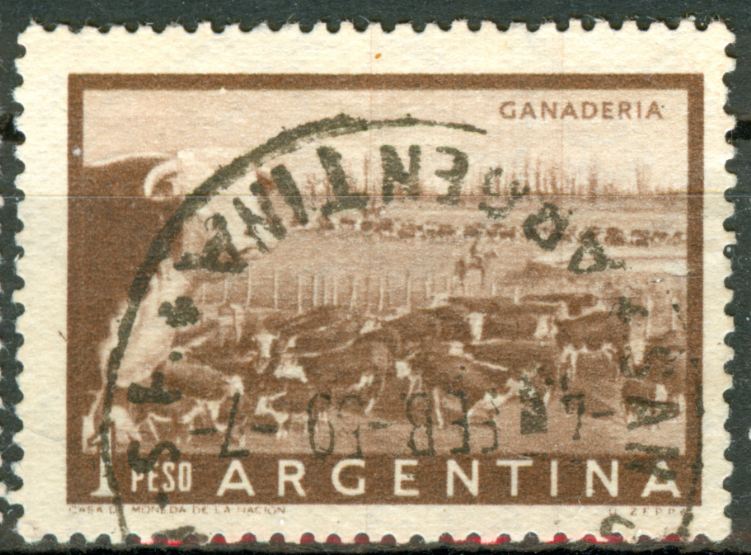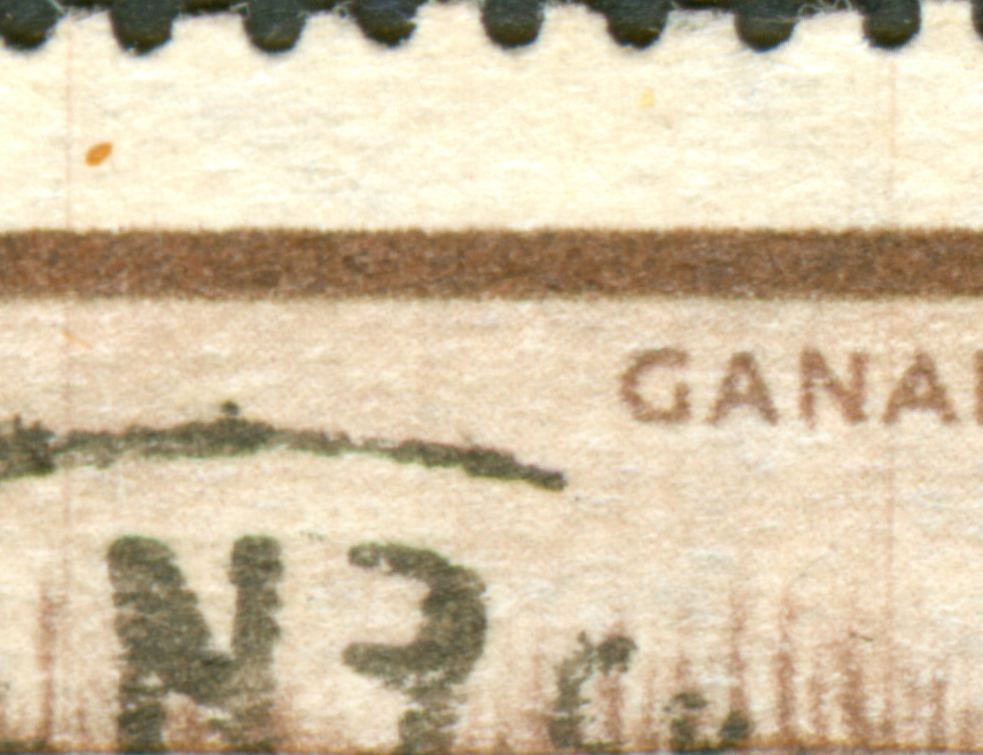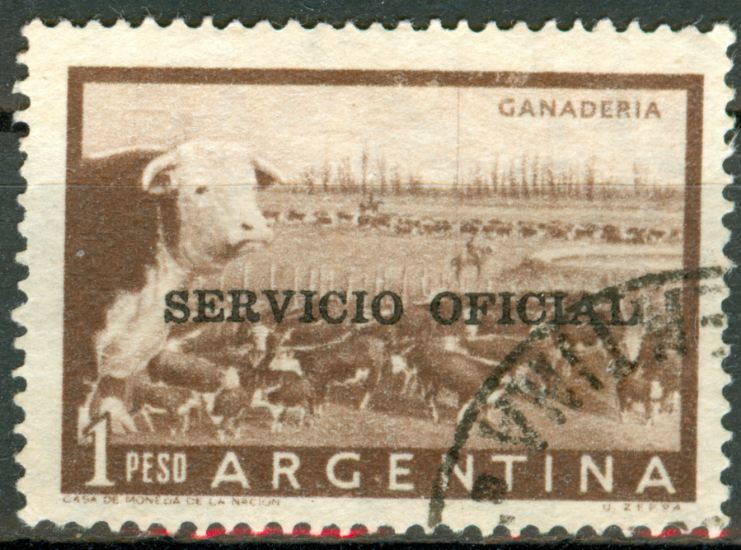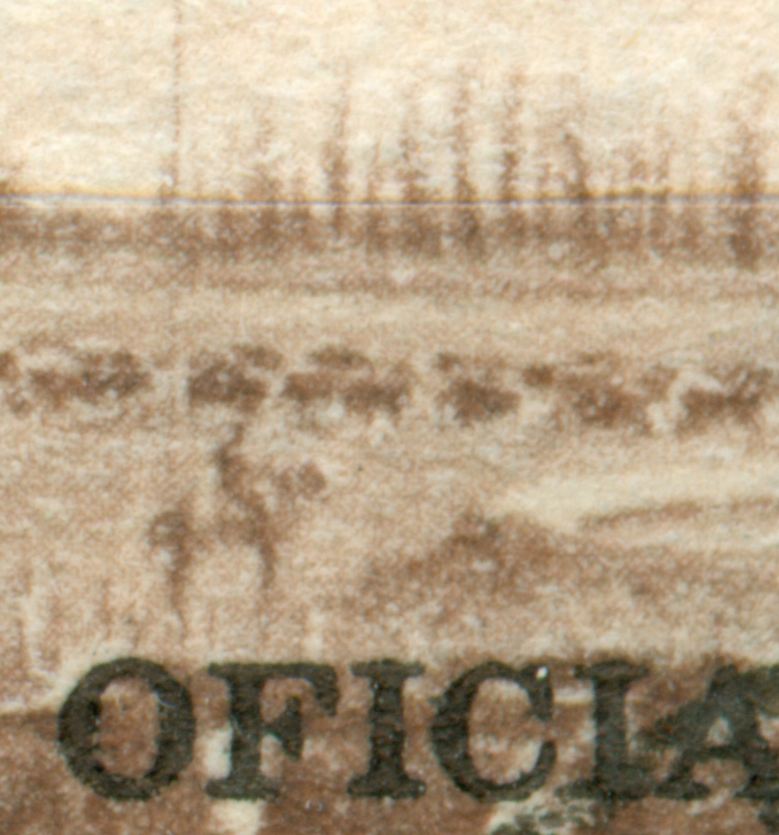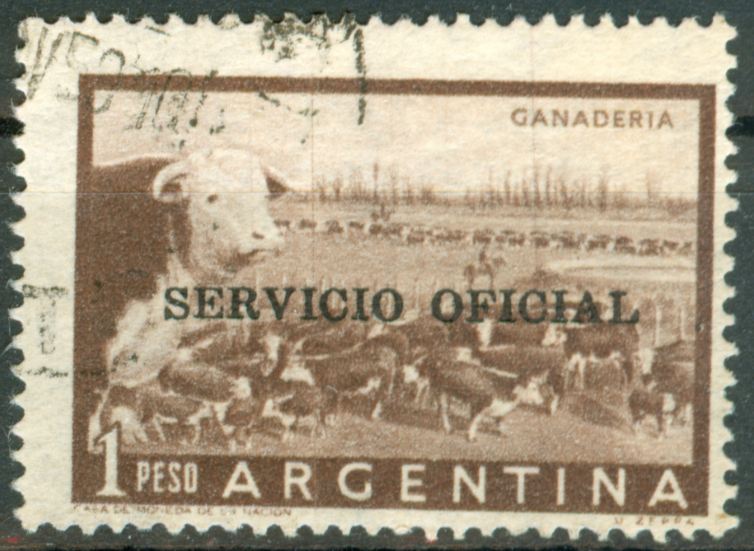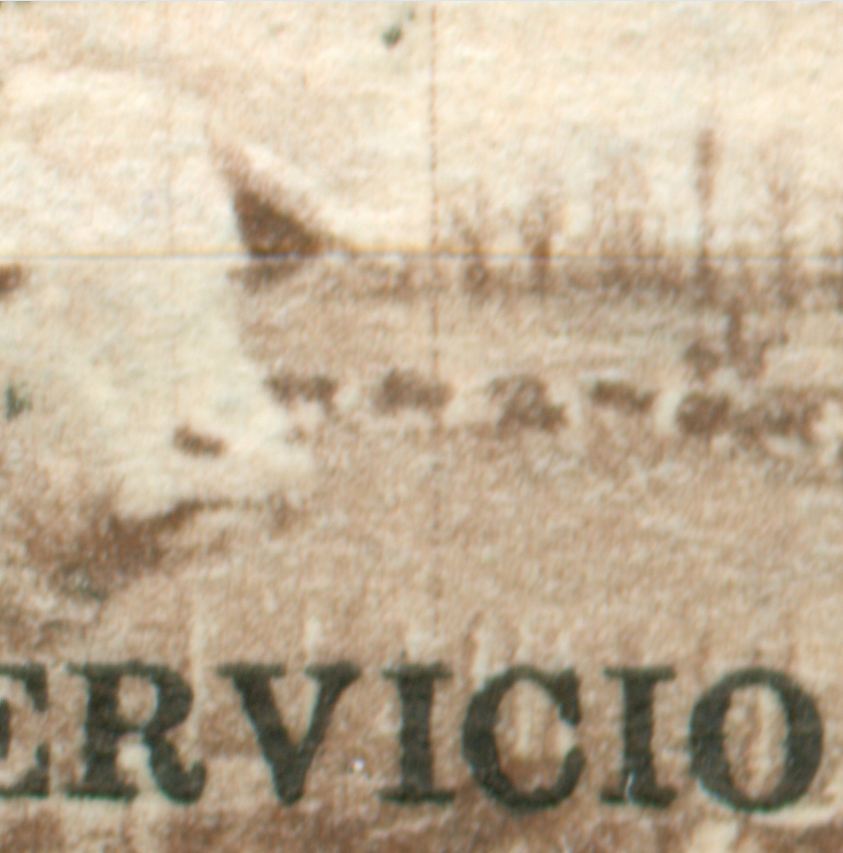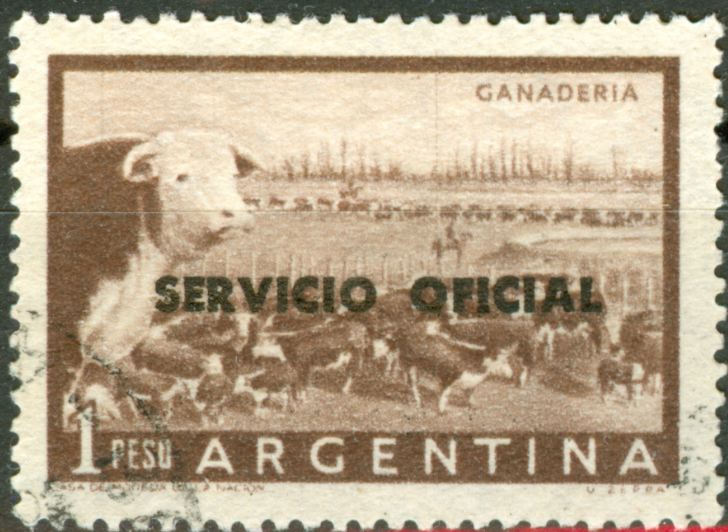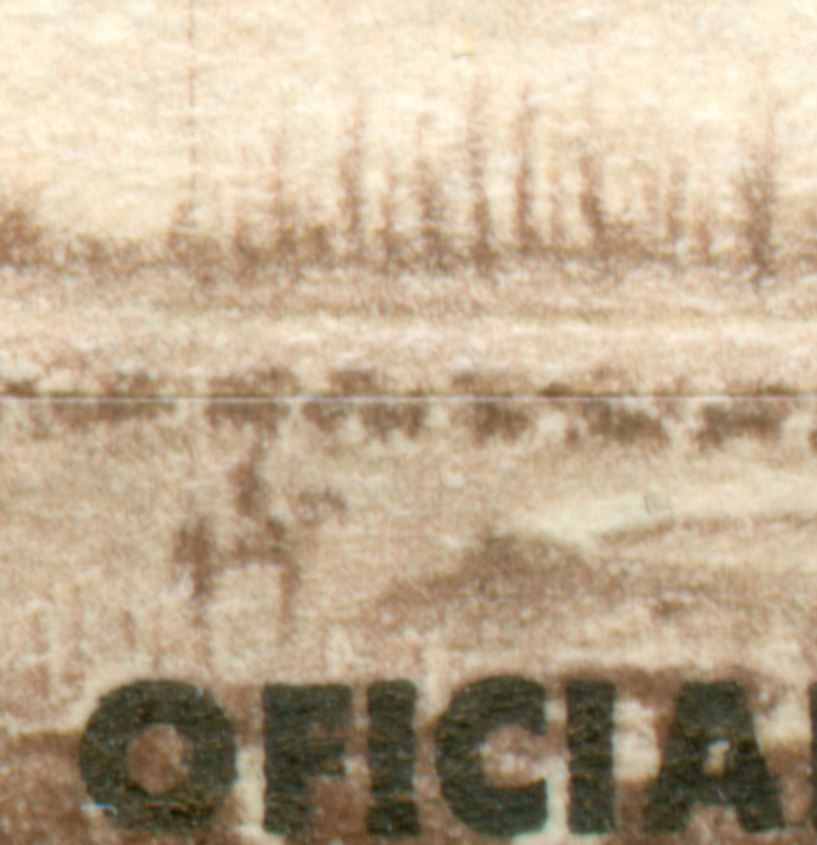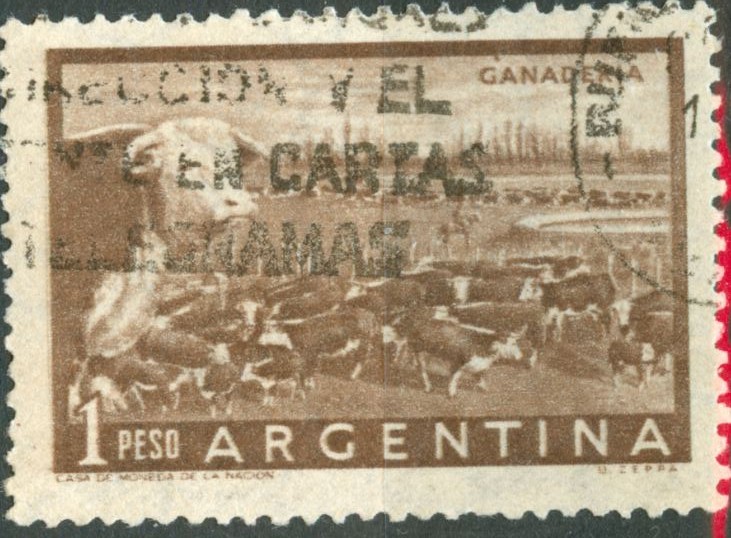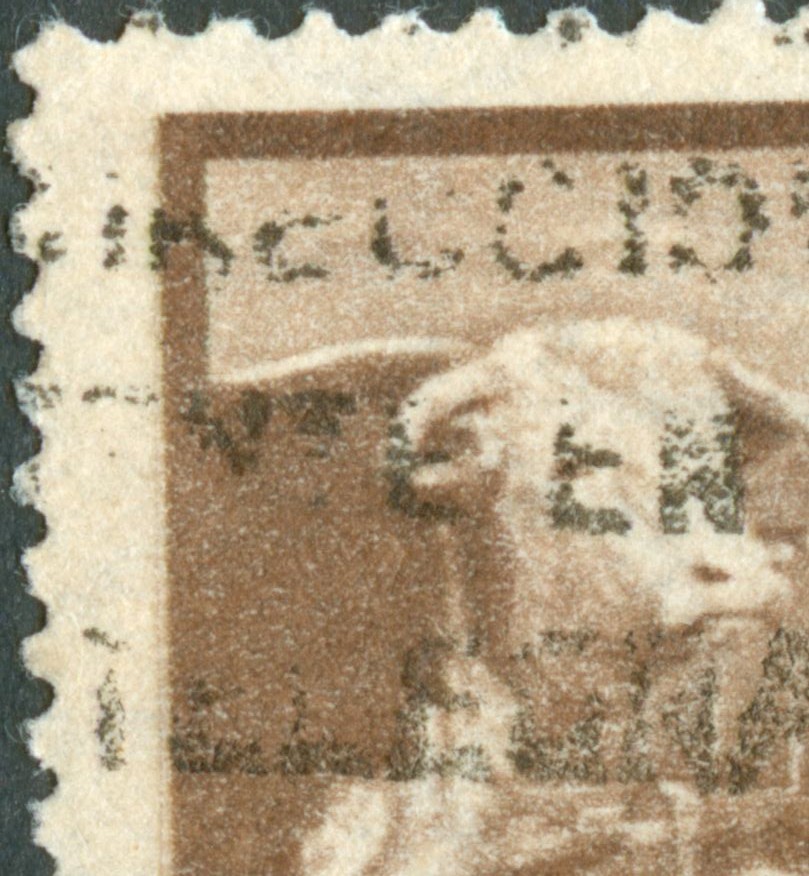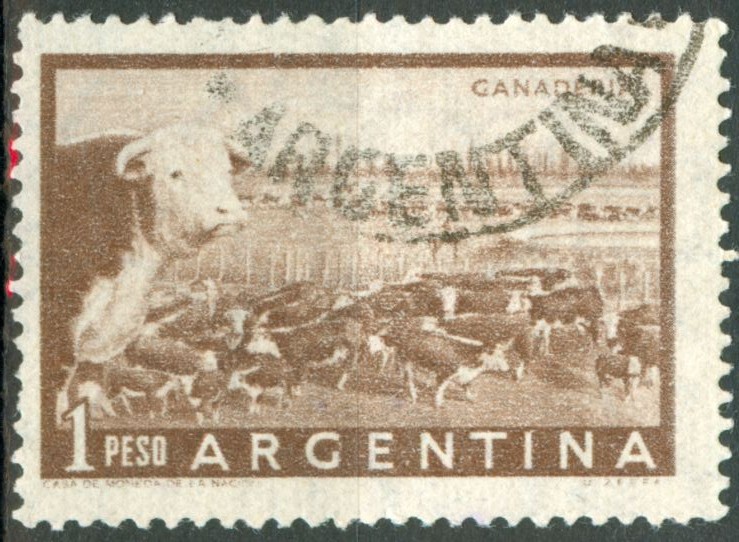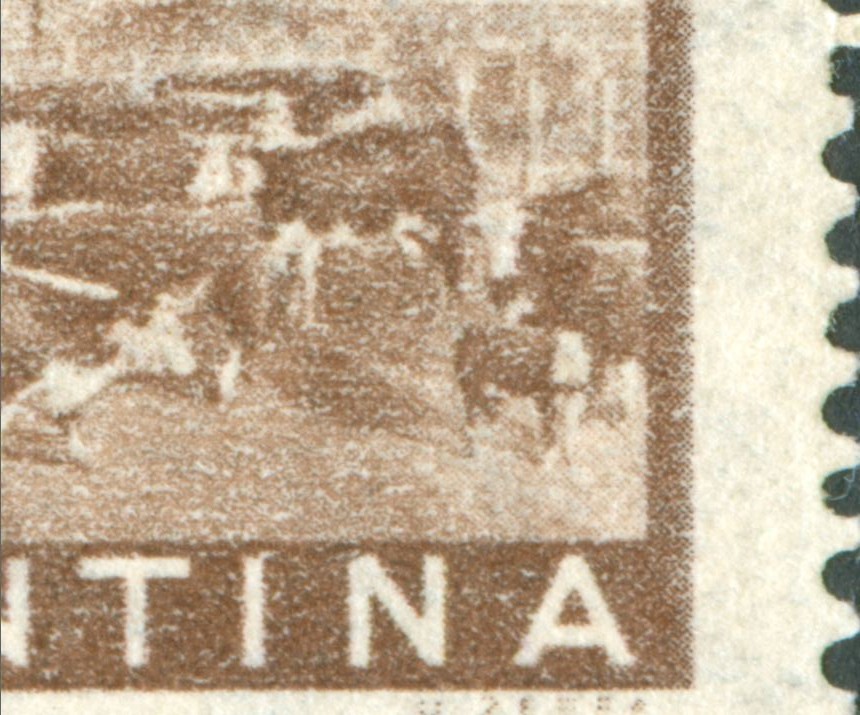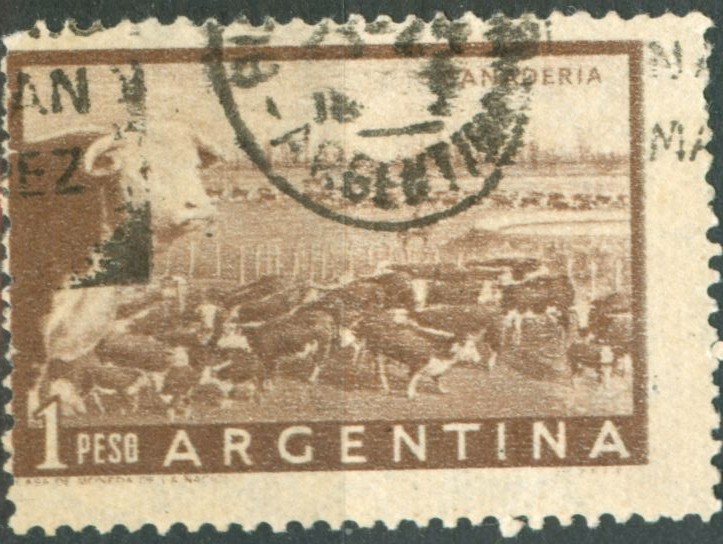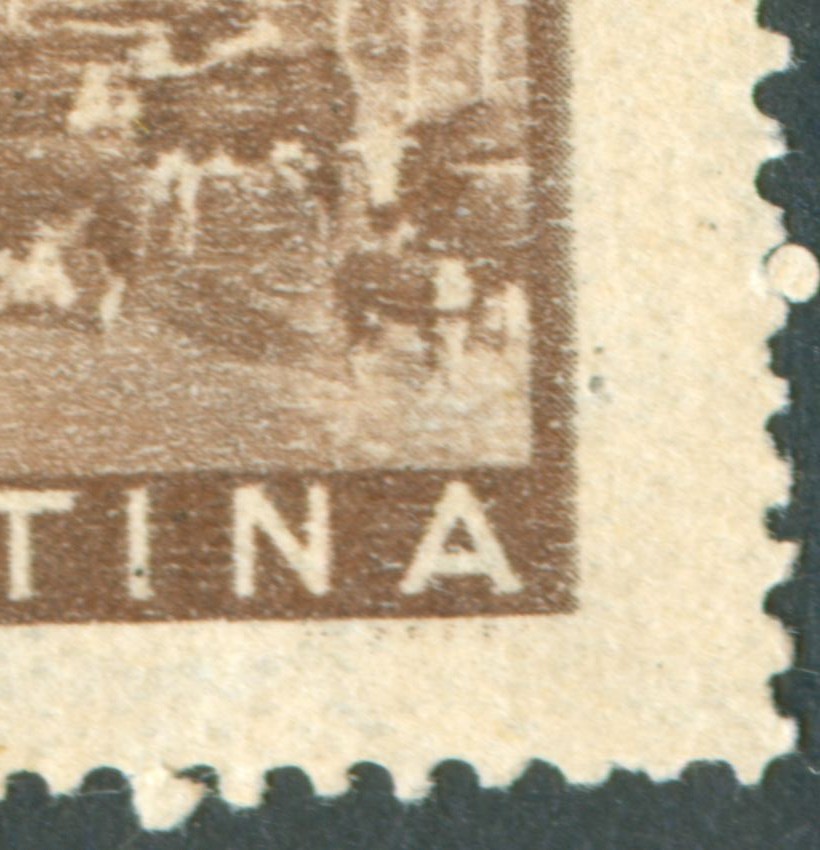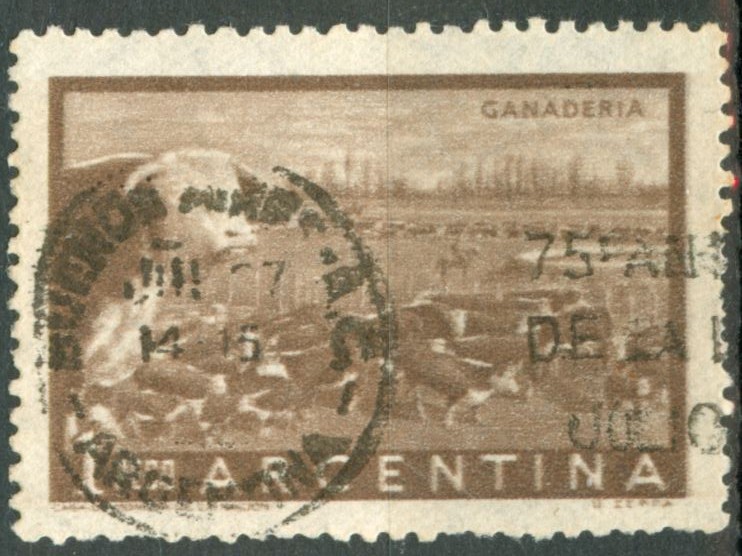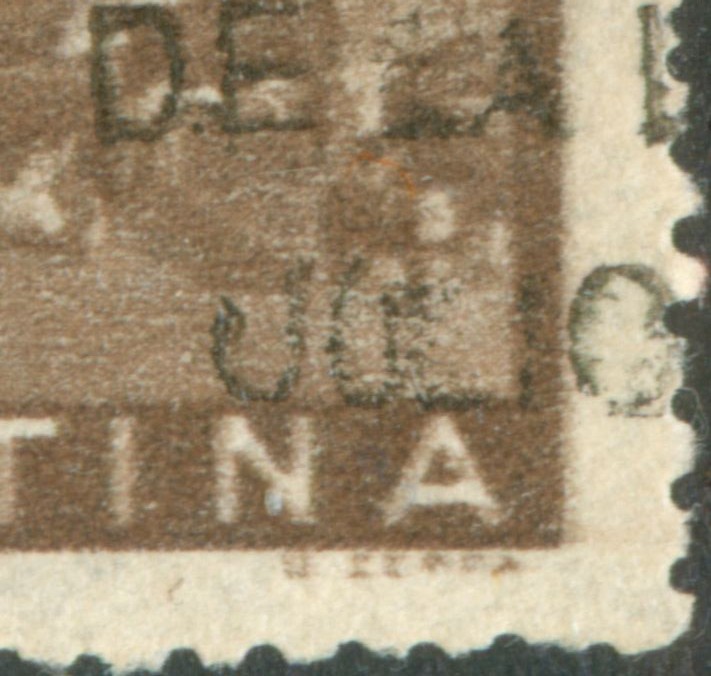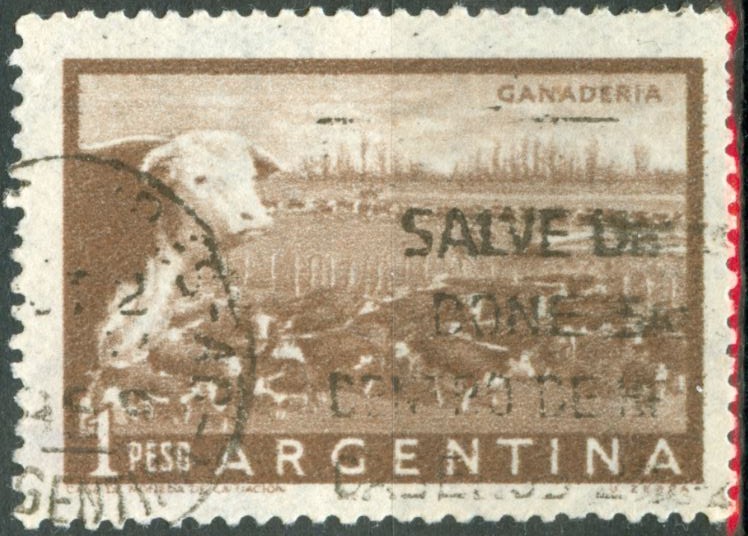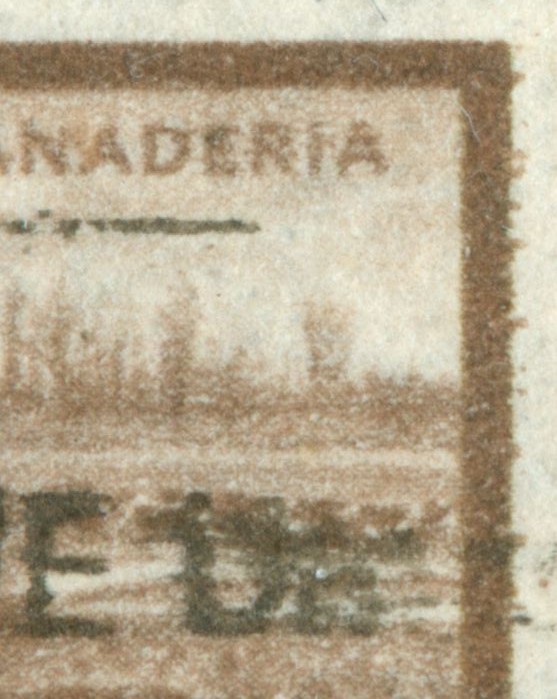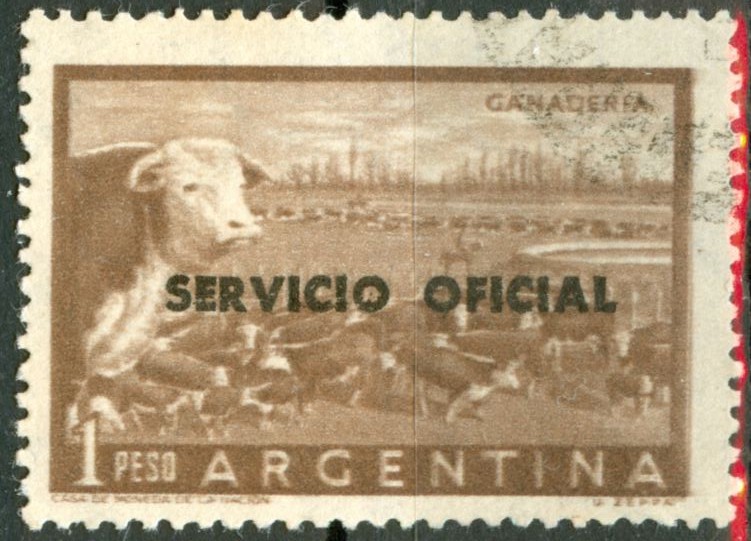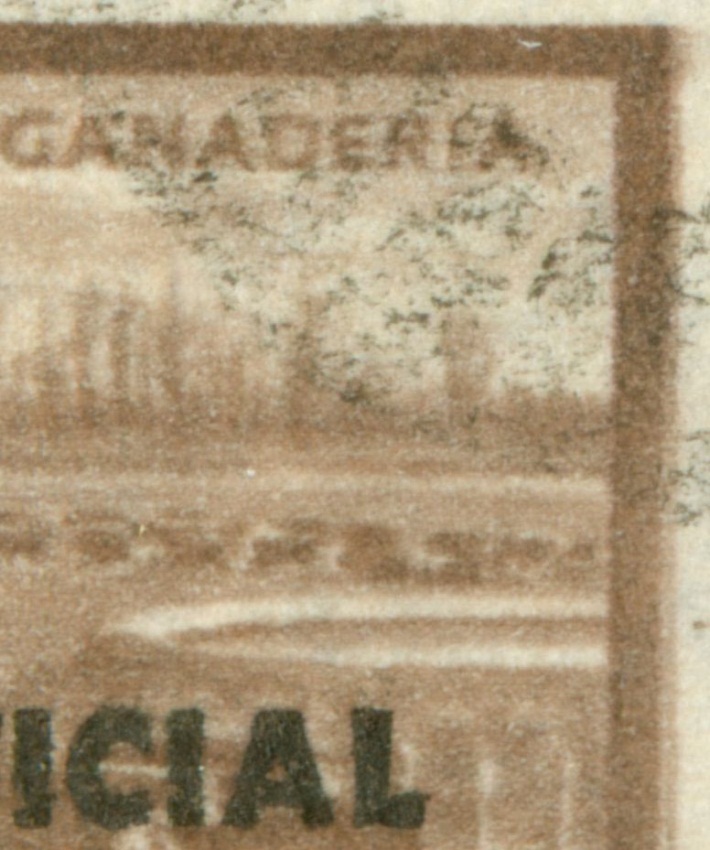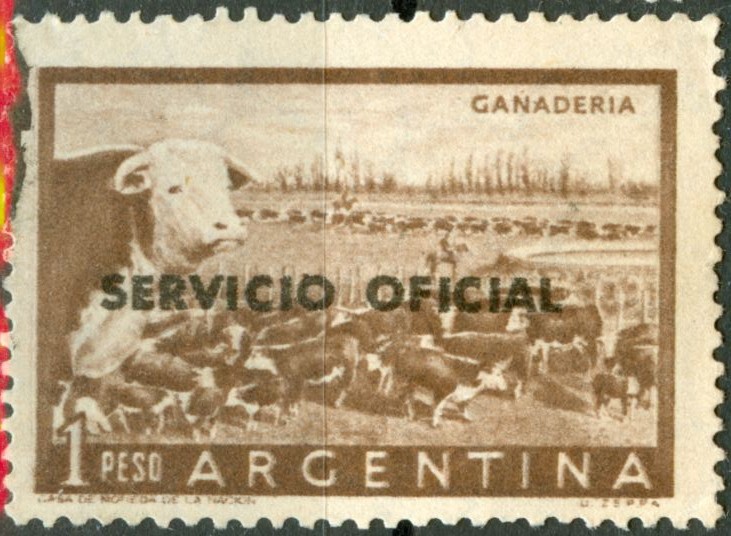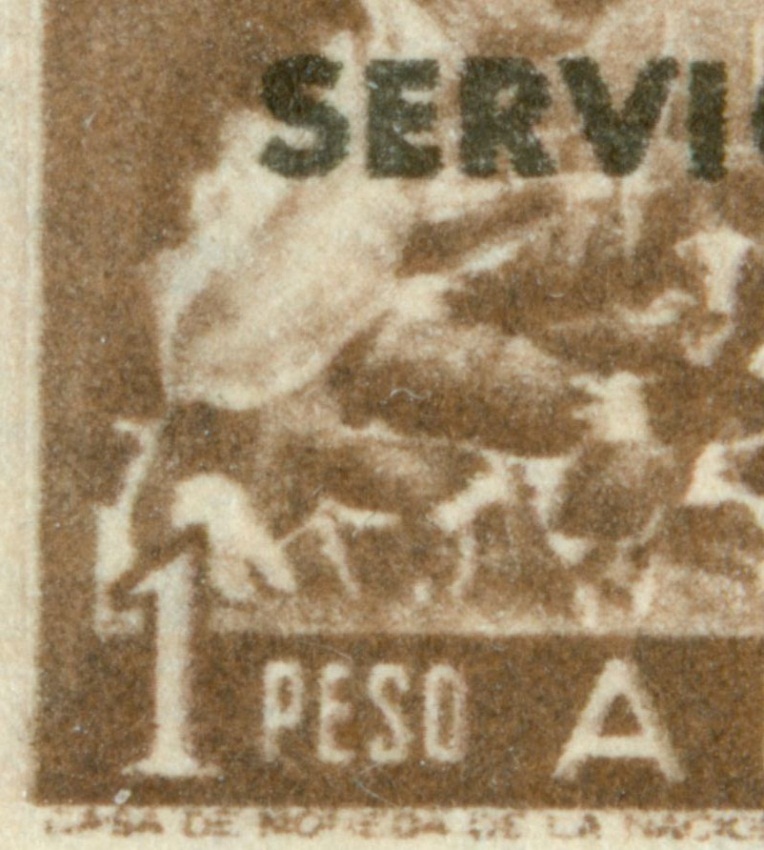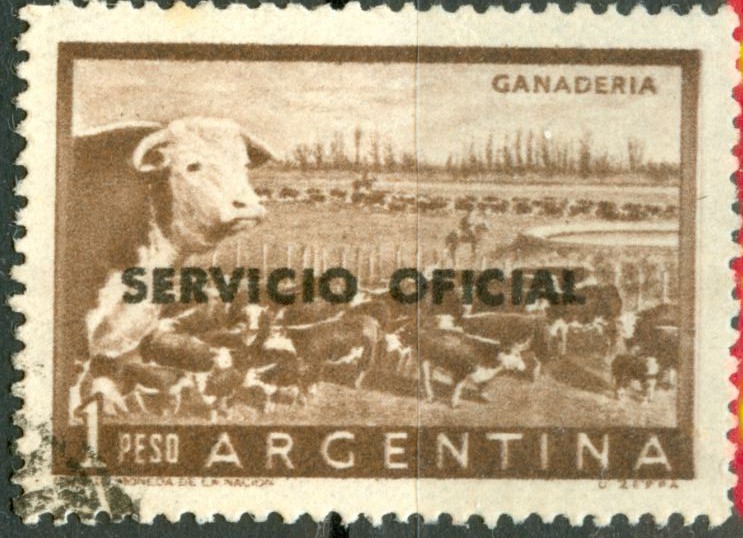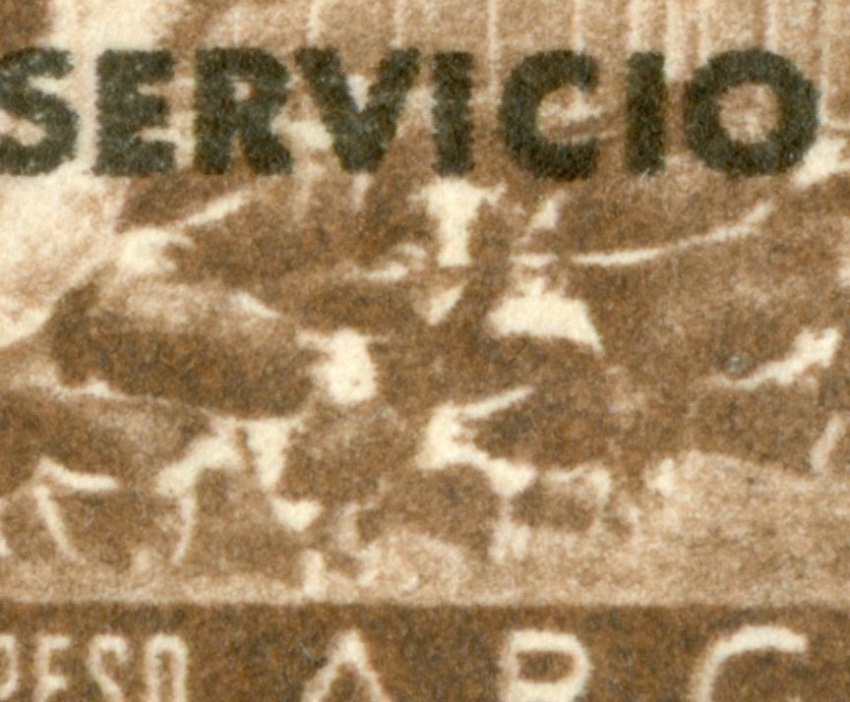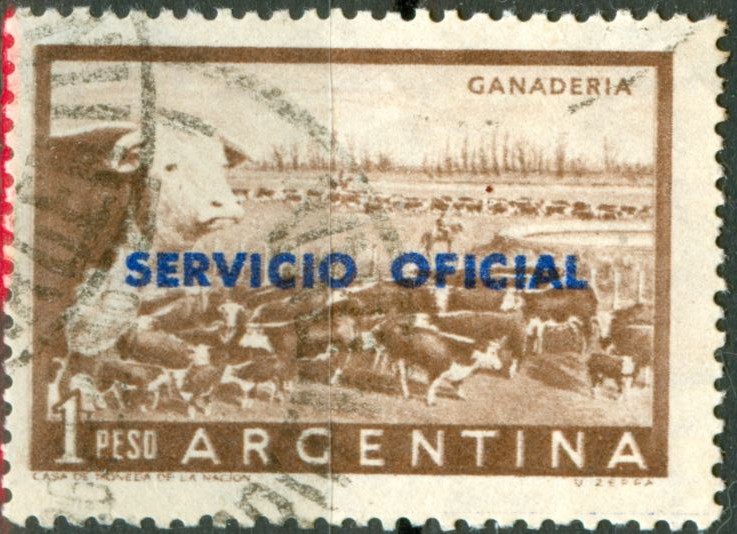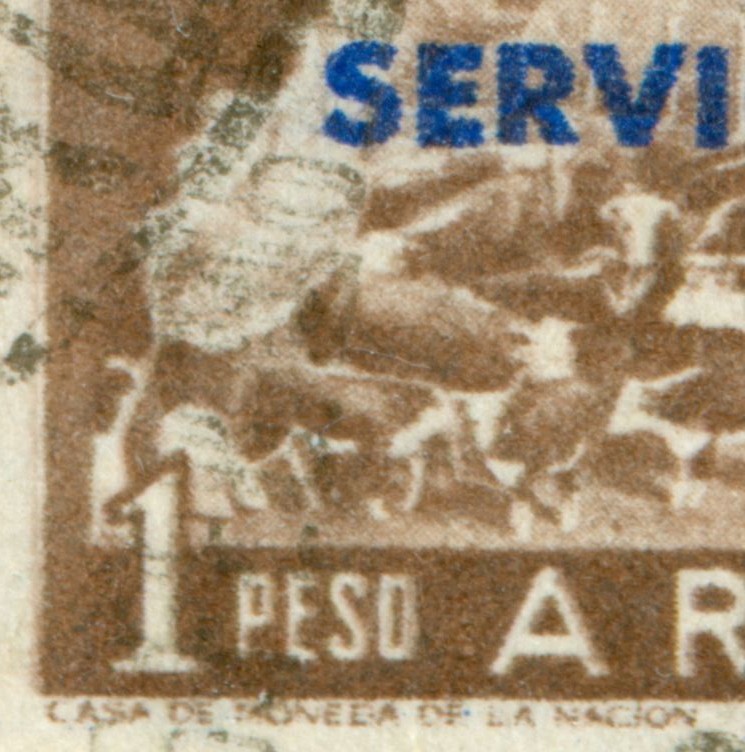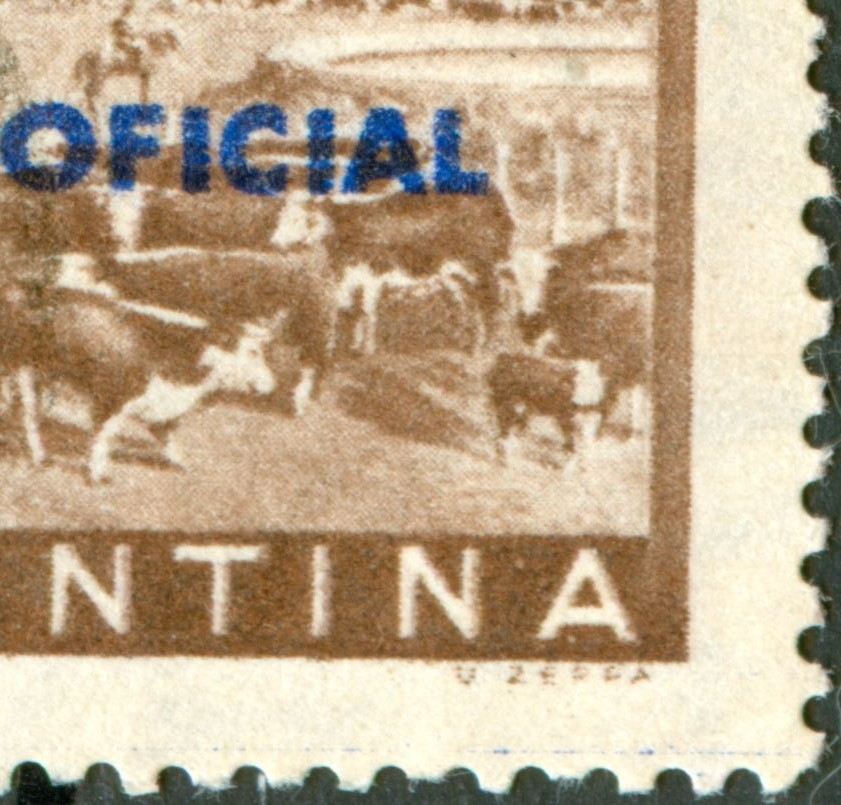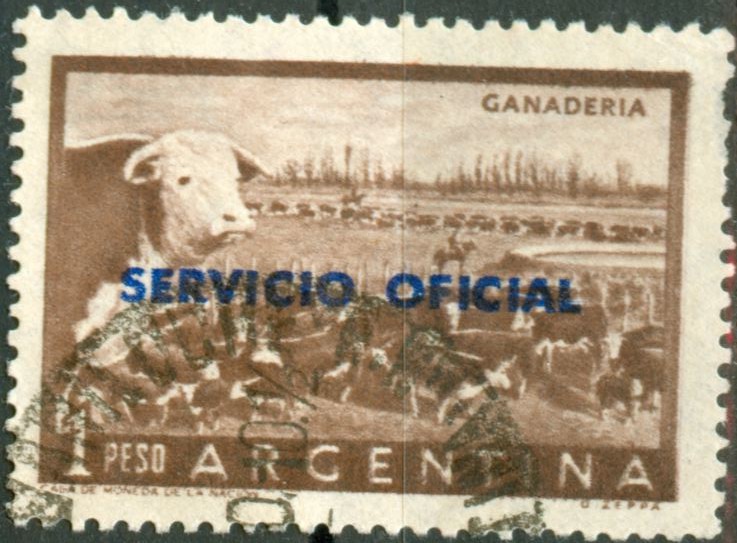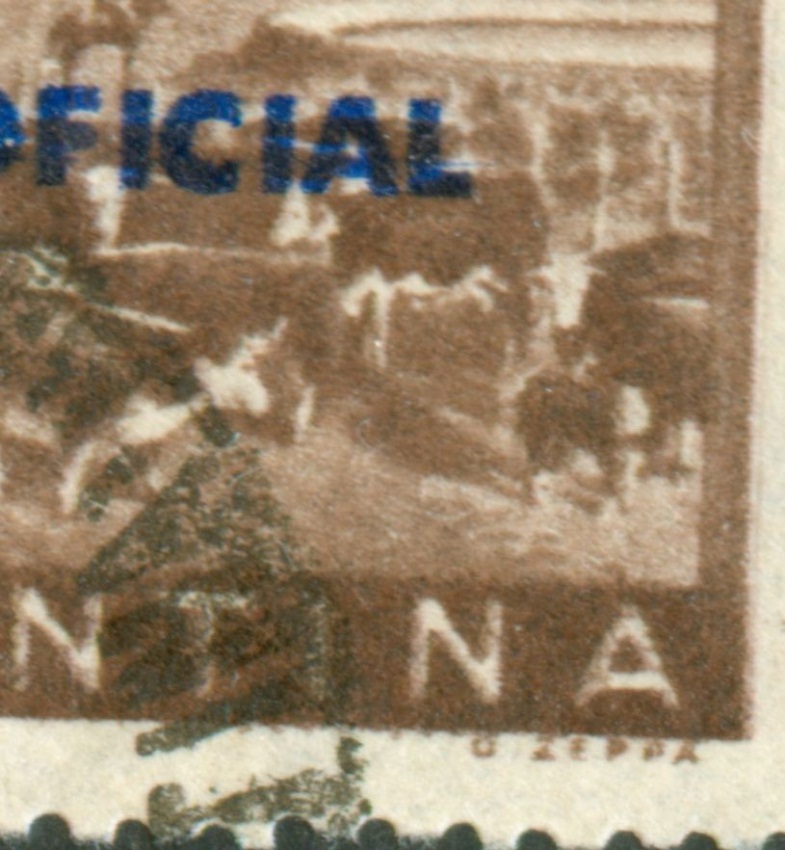The presence of doctor's blade flaws - the thin lines that get printed as the blade that wipes off the superfluous ink had some damages - is helpful in establishing the direction of printing but as it is something that should not have happened, we can not and do not have rely on their presence!Si Rein me muestra un sello del1p Toro con una melladura de la cuchilla,la raya vertical que atraviesa la viñeta, en sentido horizontal a la misma, entonces sí aceptaré lo de los dos cilindros con formatos opuestos.
Quite often the ink flow in a preferential direction is obvious enough! In the case of the 1p Ganaderia we have good examples of the ink flowing towards the left and good examples of the ink flow towards the right; alas no horizontal thin lines observed!!
The suggestion of José Merlo that the printing sheet consists of 2 panes tête-bêche is quite a good explanation for the occurance of both opposite directions of printing. It is in fact a very similar situation as the one in which around 1973 the direction of printing was discovered - the tête-bêche booket-panes...
We are going to see this tête-bêche lay-out probably in several other P&R II/III values like the 1p Girasol, the 3p Cuesta de Zapata, the 5p Riqueza Austral and the 10p Puente del Inca to start with....
to be continued ....

